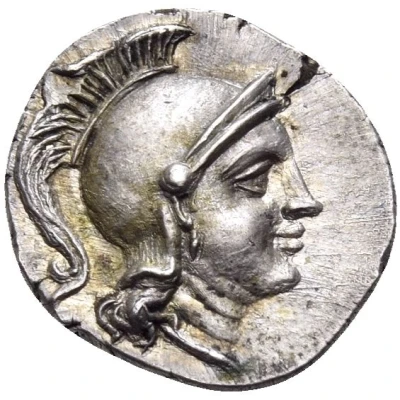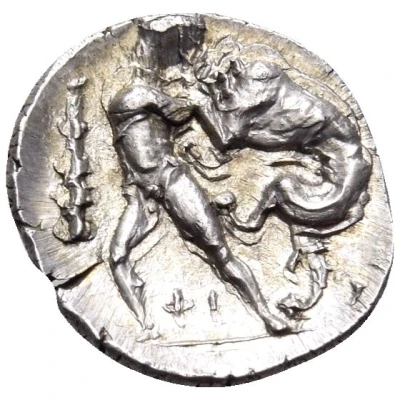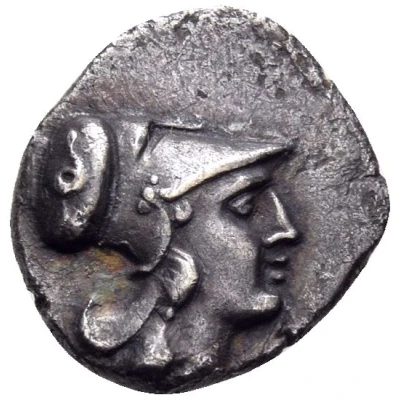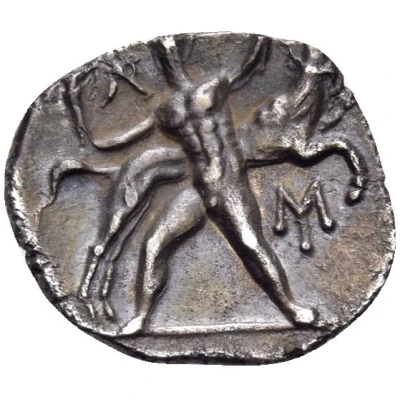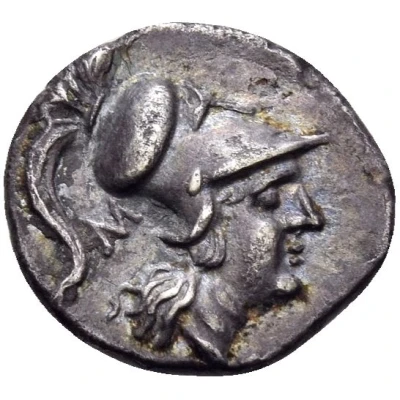
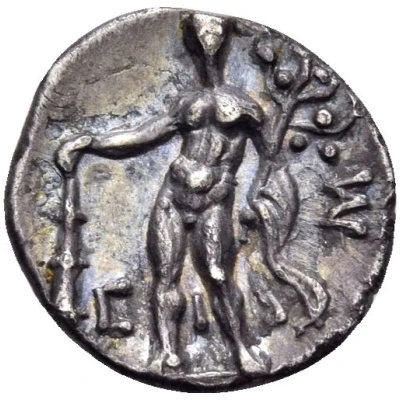

© Nomos AG
Diobol 280 BC - 228 BC
| Silver | 0.94 g | 12.5 mm |
| Issuer | Tarentum (Calabria) |
|---|---|
| Type | Standard circulation coin |
| Years | 280 BC - 228 BC |
| Value | Diobol (⅓) |
| Currency | Campanian (Italic-Achaean) drachm |
| Composition | Silver |
| Weight | 0.94 g |
| Diameter | 12.5 mm |
| Shape | Round (irregular) |
| Technique | Hammered |
| Orientation | Variable alignment ↺ |
| Demonetized | Yes |
| Updated | 2024-10-09 |
| Numista | N#417611 |
|---|---|
| Rarity index | 100% |
Reverse
Herakles standing facing, holding, with his right hand, the handle of his club, its head resting on the ground to left, and, in his left, a branch with apples (the Apples of the Hesperides); and with his lion's skin draped over his left arm.
Script: Greek
Lettering:
Σ
C Ι
Interesting fact
The Diobol coin was used as a form of currency in the ancient Greek city of Tarentum, which is now located in Calabria, Italy. The coin features an image of a mythical creature called a "Taras," which is a dolphin-riding boy, on one side, and an inscription of the city's name on the other. The use of this coin as currency in Tarentum dates back to the 4th century BC, making it one of the oldest coins in the world.
